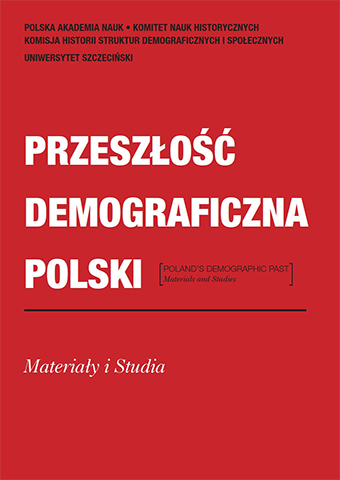| 1. | Clark, Peter, David Souden. Wstęp do: Peter Clark, David Souden, red., Migration and Society in Early Modern England, 11–48. London: Hutchinson, 1987. |
| 2. | Hochstadt, Steve, Mobility and Modernity: Migration in Germany, 1820–1989. Ann Arbor: University of Michigan Press, 1999. |
| 3. | Kümin, Beat. „Public Houses and Their Patrons in Early Modern Europe”. W: The World of the Tavern: Public Houses in Early Modern Europe, red. Beat Kümin, B. Ann Tlusty, 44–62. Aldershot, UK: Ashgate, 2002. |
| 4. | McCants, Anne. „Internal Migration in Friesland, 1750–1805”. Journal of Interdisciplinary History 22 (1992): 387–409. |
| 5. | Montenach, Anne. „Legal Trade and Black Markets: Foodtrades in Lyon in the Late Seventeenth and Early Eighteenth Centuries”. W: Female Agency in the Urban Economy: Gender in European Towns, 1640–1830, red. Deborah Simonton, Anne Montenach, 17–33. New York: Routlege, 2013. |
| 6. | Pooley, Colin G. „Local Histories of Migration and Mobility”. Local Population Studies 100 (2018), 1: 52–59. |
| 7. | Pooley, Colin G., Jean Turnbull. Migration and Mobility in Britain since the Eighteenth Century. London: UCL Press, 1998. |
| 8. | Rafacz, Józef. Ustrój wsi samorządnej małopolskiej w XVIII wieku. Lublin: Uniwersytet Lubelski, 1922. |
| 9. | Ravenstein, Ernst Georg. „The Laws of Migration”. Journal of the Statistical Society 48 (1885), 2: 168–235. |
| 10. | Ravenstein, Ernst Georg. „The Laws of Migration, Second Paper”. Journal of the Royal Statistical Society 52 (1889), 2: 241–305. |
| 11. | Ruggles, Steven. „Migration, Marriage, and Mortality: Correcting Sources of Bias in English Family Reconstitutions”. Population Studies 46 (1992), 3: 507–522. |
| 12. | Sussman, George D. Selling Mother’s Milk: The Wet-Nursing Business in France, 1715– 1914. Urbana: University of Illinois Press, 1982. |








